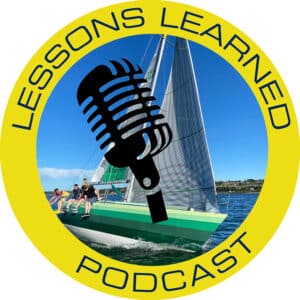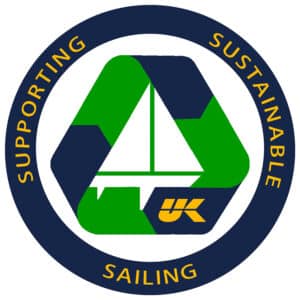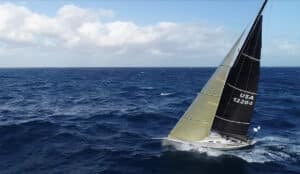We’ve all been there, a tug, tanker, ferry or some ship trying to cross our “proper course” while we’re racing. The overwhelming perception is that sailing vessels have right of way over power vessels. As seen in this photo, one would expect the ferry to alter course to avoid the sailboat under spinnaker. Great shot, great stories, memorable experience…BUT.
Yup, there’s always a “but.” In this case, it’s the fine print found within the maritime Right of Way Rules…Collision Regulation 12 in particular. Sorry, Jack Sparrow, these are hard rules…not guidelines!
Collision Reg 12 Rule 12 states that a sailboat that is under sail without the engine going generally has the right of way over motorboats. The “But” comes into play with the adjective generally as there are some exceptions:
-
Large motor vessels are given the right of way in channels where it is difficult for them to maneuver. In the case of ships, the whole San Francisco Bay is considered to be channeled so that ships always have right of way in the Bay.
-
In narrow channels, motor vessels as small as 65 feet may be limited in maneuverability enough to make them the “stand on” (privileged) vessel.
-
Motor vessels that are restricted in maneuverability due to the special job they are doing are stand on. This could be anything from towing nets or barges to dredging, pile driving, or tending buoys.
-
Motor vessels don’t have to give way to sail boats that are motoring when the rules for motorboats give the motor vessel right of way. (When motoring, a sailboat is treated like any other motorboat.)
-
If a motor vessel is experiencing some kind of difficulty restricting its maneuverability, it is given right of way.
-
If a sailboat is overtaking a power boat, the power boat has the right of way.
Back to our photo. There are at least three schools of thought regarding the sail/power crossing situation being depicted. 1) They appear to be in a harbor, so would situation #1 apply whereby the sailboat has to keep clear? 2) Is this a straight sail over power situation where the sloop can “sail on?” 3) And here’s the reality check, is it really worth risking your crew and your boat to get over the ferry’s bow regardless of who is technically right? Hummm, something to consider. When in doubt, however, bail out.
Regardless of the answer, think about teaching a teenage child to drive. Your car may have the right of way and the teenager feels empowered and entitled, but (there’s that but again) that doesn’t mean the other driver knows and will obey the rules. Better safe than sorry. And, hey, there’s always Channels 11 or 13 for bridge-to-bridge communications establish and agree to a safe crossing arrangement regardless of the Regulation.




Nice looking chute, might want to heat it up a little…
Nice looking chute, might want to heat it up a little…
Great article Adam!
Great article Adam!
Agree great article, but if one is referencing collision regulations, shouldn’t the signalling regulations also be included or referenced. It is difficult to see any identifiers that the vessel has any manoeuvring restrictions. Definitely not worth risking close quarters with that bow anyway.